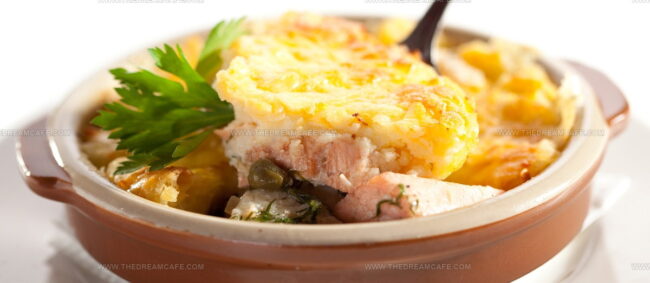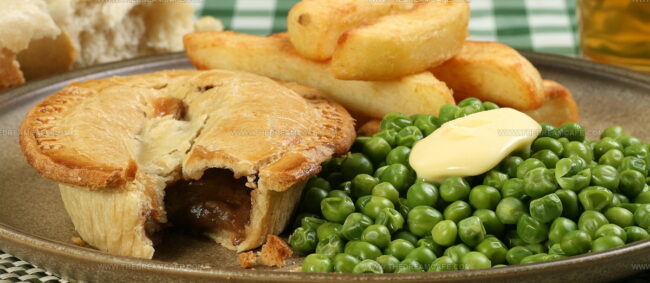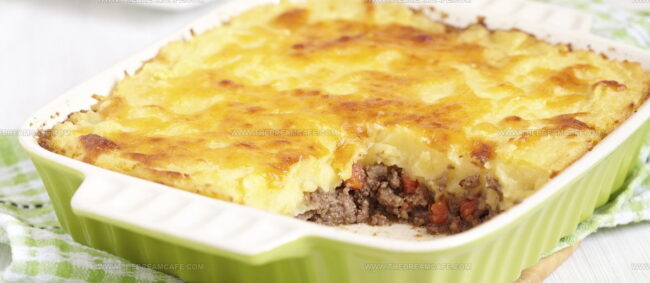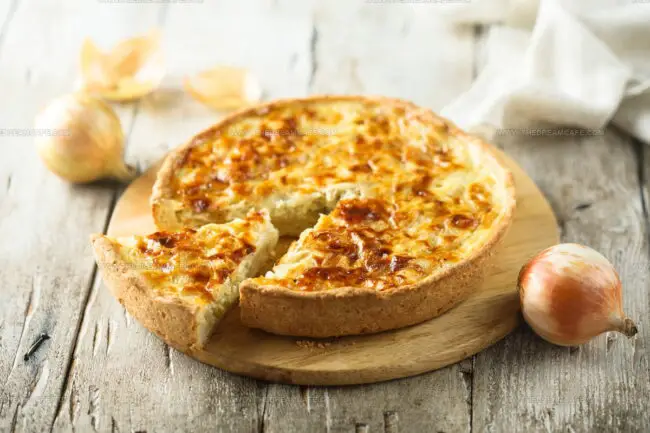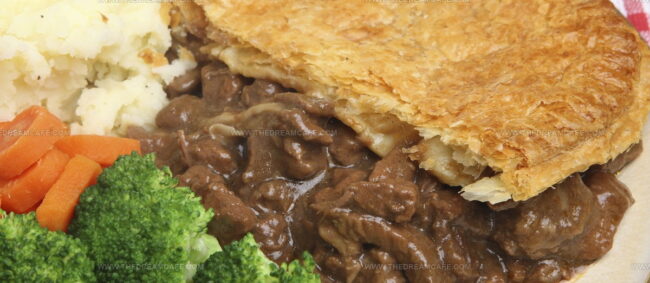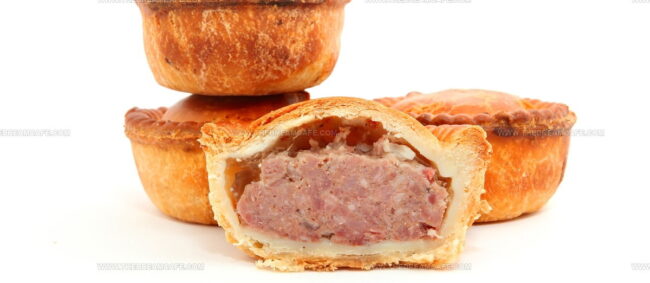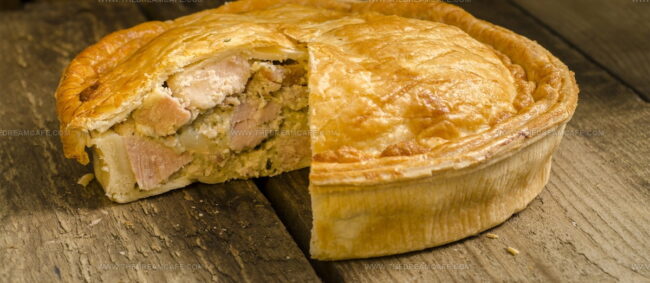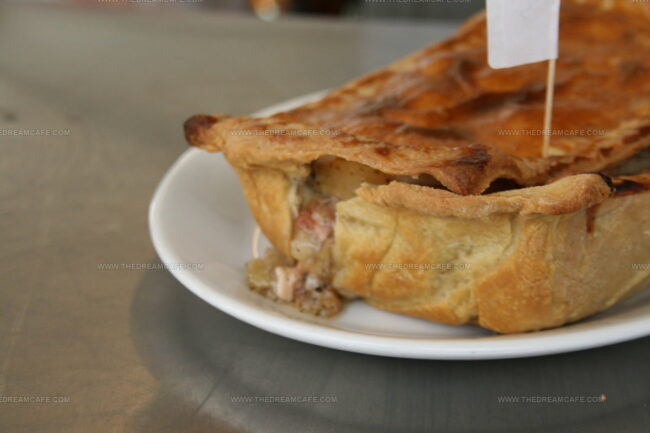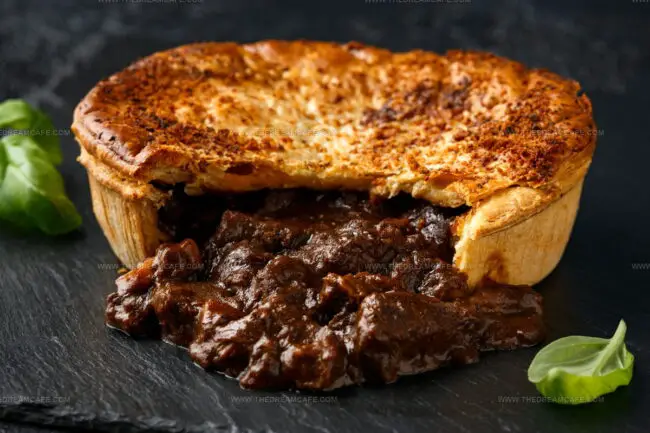22 Favorite British Pies: Charming Classics Worth Every Bite!
British pies have tantalized taste buds for centuries, representing a cherished culinary tradition that goes far beyond simple pastry.
These delectable creations embody comfort, warmth, and nostalgia in every flaky, golden-crusted bite.
Regional ingredients and time-honored techniques transform humble fillings into extraordinary gastronomic experiences that reflect cultural heritage.
Savory or sweet, these pies tell stories of local communities and generations of passionate home cooks.
Each pie carries a unique personality, blending robust flavors with delicate textures that surprise and delight.
The craftsmanship behind these beloved dishes showcases remarkable skill and deep-rooted culinary passion.
Pie-making remains an art form that continues to evolve while honoring traditional methods passed down through families: Here are 22 favorite British pies that will make your mouth water:
Favorite British Pies for Comfort Food Fans
No British meal is complete without a pie at the center. Savory or sweet, flaky pastry and hearty fillings make each one memorable.
Banoffee Pie
Banoffee pie electrifies dessert lovers with its irresistible blend of sweet banana, rich toffee, and creamy layers atop a buttery biscuit base.
English restaurateurs Nigel Mackenzie and Ian Dowding invented this iconic treat in the 1970s at The Hungry Monk restaurant in East Sussex.
Customers quickly fell in love with the unique combination of flavors, demanding it be a permanent menu fixture.
Condensed milk plays a crucial role in creating the signature toffee layer that defines the dessert's character.
Nestle's condensed milk tins frequently feature the recipe, spreading its popularity worldwide.
The pie's name cleverly combines "banana" and "toffee" to describe its key ingredients.
International popularity has grown so significantly that the dessert now appears in dictionaries.
Banoffee pie remains a beloved sweet indulgence that continues to delight taste buds across generations.
Steak Pie
Steak pie embodies British comfort food through its rich, savory filling of tender slow-cooked beef nestled within a golden, flaky pastry crust.
Scottish households traditionally serve this hearty meal on New Year's Eve, celebrating its deep cultural roots in United Kingdom cuisine.
Originating in the 18th century, early versions featured a suet-based beefsteak pudding that evolved into today's modern interpretation.
Succulent meat chunks are braised in robust gravy and mixed with seasonal vegetables like carrots and onions.
Each slice promises a warming, satisfying experience that connects generations through classic home cooking.
Serving the pie with crispy chips, a sprinkle of salt, and a dash of vinegar completes this quintessential British comfort meal.
Fisherman’S Pie
Fisherman's pie emerges as a quintessential Irish seafood comfort dish featuring layers of creamy white fish nestled beneath golden mashed potato peaks.
Maritime traditions inspire this hearty casserole, blending cod, haddock, or salmon with peas, corn, and leeks in a rich bechamel or cheddar sauce.
Coastal communities originally crafted this warming meal as a resourceful way to transform fresh catch into a satisfying dinner.
Families along Ireland's rugged shorelines perfected the recipe, using local seafood and simple ingredients.
Baking transforms the pie into a bubbling, golden masterpiece with crisp potato edges and succulent fish interior.
Professional kitchens and home tables celebrate this rustic, flavor-packed seafood classic.
Steak And Ale Pie
Steak and ale pie captures British culinary tradition with its rich, savory filling of tender beef braised in dark ale, encased in a golden, flaky pastry shell.
Chunky beef pieces mingle with hearty vegetables like onions and carrots, creating a robust flavor profile.
Classic recipe ingredients blend perfectly through slow cooking methods.
Herbs add depth and complexity to the meat's rich taste.
British pubs often serve this comfort dish alongside crispy chips and green peas.
Generations have enjoyed this warming meal during cold evenings.
Working-class origins highlight its simple yet satisfying nature.
Shepherd’S Pie
Shepherd's pie is a classic British comfort food packed with hearty minced lamb, vegetables, and a creamy mashed potato topping that originated in 18th-century England and Scotland.
Shepherds created this savory one-dish meal as a practical way to use leftover meat and seasonal vegetables.
Worcestershire sauce adds depth to the rich gravy, while herbs like marjoram and parsley enhance the flavor profile.
Traditional ingredients include lamb, onions, carrots, and a thick sauce topped with buttery mashed potatoes.
The dish gained massive popularity in the 1870s when mincing machines became widely available to home cooks.
Home kitchens and pubs across the United Kingdom continue to serve this warming meal as a satisfying dinner option.
Baking the pie in an oven creates a golden, crispy potato crust that seals in the robust flavors.
Pie And Mash
Pie and mash represents a quintessential London street food combining hearty meat pies with creamy mashed potatoes, originating from East End working-class traditions.
Thames river eels originally filled these savory pies before ground beef became the standard meat filling.
Humble restaurants called "pie and mash shops" emerged across London, serving affordable meals to generations of local residents.
Victorian-era establishments maintained classic wooden interiors with marble countertops and simple decor.
Traditionally served with a green parsley sauce called "liquor," this dish tells a story of London's culinary heritage.
Working-class communities embraced pie and mash as a budget-friendly, satisfying meal during challenging economic times.
Generations of families have enjoyed this straightforward, comforting dish that remains popular in East London neighborhoods.
British food culture continues to celebrate this simple yet iconic meal that connects past and present.
Cheese And Onion Pie
Cheese and onion pie represents a quintessential English comfort food featuring a rich pastry filled with melted cheese and caramelized onions.
Originating in northwestern England, this savory dish combines crumbly cheddar with sweet, slow-cooked onions nestled within a buttery shortcrust pastry.
Traditional recipes include simple ingredients like flour, milk, and cream for a smooth sauce binding the filling.
Some variations incorporate potatoes for extra texture and depth of flavor.
Versatile in serving temperature, the pie tastes delicious whether enjoyed warm or chilled.
Typically served with crisp chips and a fresh green salad, this classic British comfort food offers a simple yet comforting dining experience.
Melton Mowbray Pork Pie
Melton Mowbray pork pies are legendary British culinary treasures crafted with premium fresh pork and traditional baking techniques.
Multiple-time winners of the British Pie Awards, these iconic pies feature a distinctive free-standing pastry case without structural hoops.
Skilled butchers carefully chop and season high-quality pork with salt and pepper, creating a uniquely grey meat filling when baked.
Golden-brown pastry encases the succulent meat, delivering an authentic flavor profile deeply rooted in British food culture.
Regional craftsmanship defines these pies, which originated in Leicestershire's Melton Mowbray area.
Precise preparation methods ensure each pie maintains its signature shape and rich taste.
Traditional baking techniques transform simple ingredients into a gourmet experience.
Generations of British food lovers continue to celebrate this distinctive regional delicacy.
Meat And Potato Pie
Meat and potato pie stands as a quintessential British comfort dish featuring robust layers of seasoned meat and tender potatoes nestled within a flaky, golden pastry shell.
English kitchens traditionally craft this hearty pie using beef or lamb chunks combined with chopped onions and potatoes, creating a satisfying one-dish meal.
Suet-based pastry forms the sturdy exterior, which encases the savory filling and becomes crisp and bronzed during baking.
Red cabbage frequently accompanies the pie as a tangy side dish.
Winter months especially highlight this warming meal's popularity across working-class and rural communities.
Generations of British families have enjoyed this simple yet substantial recipe passed down through decades of home cooking traditions.
Scotch Pie
Scotch pies are iconic Scottish hand-held meat pastries featuring a distinctive double-crusted shell packed with spiced minced meat.
Scottish butchers traditionally crafted these compact pies using hot water crust pastry, enabling the robust shell to maintain its structural integrity without requiring a baking tin.
Mutton originally dominated the filling, though modern variations now embrace beef, lamb, and diverse meat blends seasoned with robust spices and onions.
Street vendors and bakeries across Scotland serve these portable protein-rich snacks, which remain popular at sporting events, markets, and casual dining establishments.
Football matches and local gatherings frequently feature Scotch pies as quick, satisfying protein options.
Working-class communities historically embraced these affordable, hearty pastries as convenient meal solutions.
Bakery competitions and regional pride often highlight the subtle differences in preparation techniques and seasoning.
Small bakeries continue preserving generations-old recipes, ensuring this traditional Scottish street food maintains its cultural significance.
Steak And Kidney Pie
Steak and kidney pie dominates British savory pastry cuisine as a robust meat-filled delicacy featuring tender beef and lamb kidneys encased in golden, flaky pastry.
Traditional recipes originated in mid-19th century England, specifically documented in Isabella Beeton's influential cookbook.
Generations of families have treasured this hearty meal as a winter comfort food with deep working-class roots.
Slow-cooked meat provides rich, intense flavor while buttery pastry creates a satisfying textural contrast.
Kidney selection typically involves lamb or ox varieties, carefully cleaned and trimmed before cooking.
Professional bakers often add beef stock, onions, and herbs to enhance the filling's complexity.
Skilled home cooks consider precise pastry technique essential for achieving perfect golden-brown crust.
Pork Pie
Pork pies are traditional British cold meat pastries originating in medieval England with a distinctive golden hot water crust and rich meat filling sealed by savory gelatin.
Medieval hunters and farmers cherished these portable meals for their robust flavor and convenient shape.
Melton Mowbray remains the most famous production region for authentic pork pies, maintaining centuries-old preparation techniques.
Minced pork gets seasoned carefully before being encased in thick pastry and baked in small tins.
British picnics, birthday celebrations, and street parties frequently feature these compact protein-packed snacks.
Meat varieties now include chicken and beef alongside classic pork versions.
Gelatin surrounding the meat acts as a protective layer, helping preserve the pie's texture and taste.
Cold consumption highlights the pie's traditional serving method, allowing flavors to meld perfectly.
Mince Pie
Mince pies are traditional British Christmas pastries with rich historical roots and complex flavor profiles originating from medieval England.
Medieval bakers initially crafted these small treats using actual minced meat, dried fruits, and exotic spices as symbols of wealth and culinary sophistication.
Religious symbolism played a significant role, with rectangular pie shapes resembling Jesus's manger and connecting the dessert to spiritual celebrations.
Sweet dried fruits gradually replaced meat ingredients over centuries, transforming the recipe into a predominantly sugary delicacy.
Warm spices like nutmeg, cinnamon, and cloves provide deep, complex flavors within the crumbly pastry shell.
Seasonal preparation involves mixing candied fruits, raisins, and currants with subtle spice blends.
Modern versions typically include brandy or rum for extra richness.
British families continue serving these small pies as cherished Christmas tradition, maintaining centuries of cultural culinary heritage.
Game Pie
Game pie represents a quintessential British culinary tradition featuring a robust pastry shell packed with succulent wild meats like venison, rabbit, and pheasant slowly simmered in rich, hearty gravy.
British hunters and rural communities have enjoyed this savory pie since medieval times as a practical way to preserve seasonal game meats during colder months.
Hunters would carefully select the freshest wild game, ensuring maximum flavor and tenderness for the pie's filling.
Pastry makers would craft intricate crusts that sealed in the meats' natural juices and protected the delicate ingredients.
Professional butchers and countryside families have maintained this classic recipe for generations.
Skilled bakers often create elaborate decorative crusts that showcase both culinary expertise and artistic flair.
Fidget Pie
Fidget pie originates from Shropshire as a rustic meat-based pastry featuring a hearty blend of savory ingredients.
Regional bakers craft this traditional pie with a flaky hot-water or shortcrust pastry shell filled with crispy bacon, tart Granny Smith or Bramley apples, and chopped onions.
Savory seasonings like parsley, salt, and pepper enhance the pie's rich flavor profile.
Cider and cornstarch create a subtle binding sauce that moistens the filling.
Beef suet or lard provides extra richness to the pastry's texture.
Farmers and rural communities historically prepared this dish as a substantial meal using readily available ingredients.
Coronation Quiche
Coronation quiche symbolizes royal culinary tradition by combining simple ingredients into an elegant dish celebrating King Charles III's coronation.
Buckingham Palace strategically selected this spinach and broad bean quiche for its adaptability and accessibility to home cooks.
Rich double cream and cheddar cheese create a smooth, savory filling complemented by delicate tarragon.
Lard-based pastry provides a traditional buttery crust that enhances the quiche's texture.
Royal chef Mark Flanagan carefully crafted this recipe to represent contemporary British cooking.
Eggs and milk bind the ingredients together, creating a balanced flavor profile.
Broad beans and spinach add nutritional depth and vibrant green color.
Salt and pepper season the quiche, ensuring a classic taste that appeals to diverse palates.
Musselburgh Pie
Steak pie blends Scottish culinary traditions with rich, indulgent flavors featuring thinly beaten beefsteak rolled around succulent mussels or oysters.
Streaky bacon often wraps the seafood, adding depth and saltiness to the meat's core.
Chefs carefully encase this luxurious filling within a golden, egg-glazed puff pastry shell that provides a crisp, flaky exterior.
Meat lovers celebrate this dish for its complex layering of textures and intense maritime-inspired taste profile.
Regional Scottish variations might include different protein combinations or subtle seasoning tweaks.
Generations have passed down recipes for this intricate pie, maintaining its cultural significance.
Ingredients typically come from local Scottish farms and coastal regions.
Serving the pie hot ensures maximum flavor and textural enjoyment.
Lancashire Butter Pie
Lancashire butter pie merges rich potato and onion flavors within a golden shortcrust pastry, originating from Lancashire's Catholic community who avoided meat during religious observances.
Medieval dietary restrictions inspired this unique dish, which traditionally replaced meat with creamy butter on Fridays.
Bakers craft the pie using simple ingredients like potatoes, onions, butter, salt, and pepper, creating a hearty comfort food.
Potential vegetarians should note that some recipes incorporate lard in the pastry crust, making it not strictly vegetarian-friendly.
Religious traditions deeply influenced the pie's development, earning it alternative names like "Catholic pie" and "Friday pie".
Lancashire's culinary heritage shines through this straightforward yet flavorful traditional recipe.
Regional cooking methods ensure the pie maintains its authentic taste and cultural significance.
Generations have enjoyed this unpretentious dish as a testament to Lancashire's resourceful food culture.
Marlborough Pie
Marlborough pie is a nostalgic New England dessert blending apple custard with rich sherry-infused flavors inside a delicate pastry crust.
Massachusetts settlers likely created this distinctive pie during colonial times using abundant regional ingredients.
Sweet apples form the pie's creamy foundation, complemented by smooth eggs and cream.
Sherry wine adds unexpected depth and complexity to the traditional recipe.
Warm spices like cinnamon and nutmeg enhance the filling's aromatic profile.
Bakers carefully craft the flaky, butter-rich crust to cradle the silky custard interior.
Each slice offers a harmonious balance of sweet, tangy, and spiced notes.
Historical cookbooks preserve this treasured recipe as a glimpse into early American culinary traditions.
Fatherless Pie
Fatherless pie embodies Isle of Man's rustic culinary heritage with its simple yet satisfying potato-based recipe.
Shortcrust pastry serves as the delicate foundation for this traditional dish.
Thin potato slices carefully layer across the pastry's surface, creating a golden-brown landscape of comfort.
Butter generously coats each potato slice, adding rich depth to the pie's flavor profile.
Salt and pepper provide subtle seasoning that enhances the potatoes' natural earthiness.
Milk and water blend into the ingredients, helping bind the pie's components together.
Baking transforms the raw ingredients into a warm, golden creation that speaks to the island's agricultural roots.
Generations of Manx families have enjoyed this unpretentious and nourishing pie as a staple meal.
Stargazy Pie
Stargazy pie represents a quirky Cornish seafood delicacy where whole sardines peek through a buttery pastry crust, symbolizing a traditional maritime survival dish.
Fishermen from Mousehole village created this unique pie to commemorate their winter fishing triumphs during challenging seasons.
Baked with hard-boiled eggs, potatoes, and bacon, the pie includes a mustard-flavored custard that adds rich complexity to its flavor profile.
Sardines positioned head-first through the crust were strategically placed to preserve their essential oils during cooking.
Tom Bawcock's Eve festival celebrates this culinary tradition annually in Cornwall.
Historical accounts suggest the pie potentially prevented starvation during harsh winter months.
Locals embrace this eccentric dish as a testament to their seafaring heritage.
Generations have maintained this distinctive recipe, transforming a survival meal into a cherished cultural celebration.
Katt Pie
Katt pie stands as a hearty Cornish meat pastry bursting with rustic flavors from rural England.
Ground lamb or mutton forms its rich core, complemented by sweet currants and zesty lemon zest.
Traditional ingredients like flour, salt, lard, eggs, and water create its sturdy pastry shell.
Thyme and brown sugar add depth and complexity to the filling's profile.
Skilled bakers carefully assemble the pie with precise layering techniques.
Baking transforms the raw ingredients into a golden-brown delicacy.
Cornwall's culinary heritage shines through this robust dish.
Generations have enjoyed this warming meal as a satisfying meal during cold seasons.
What’s the Difference Between a Pie, a Pasty, and a Pudding in Britain?
British cuisine features a variety of classic dishes often confused by their names. While pies and pasties are baked pastries with fillings, puddings can be steamed or boiled and may be sweet or savory, making each distinct in British culinary tradition.
Here’s how pies, pasties, and puddings differ:
Pie
A pie is a baked dish with a pastry crust that can be either open-topped or fully enclosed. Typically filled with meat, vegetables, or fruit, pies can be savory (like steak and kidney pie) or sweet (like apple pie).
Pasty
A pasty is a handheld, baked pastry with a thick, crimped edge, traditionally filled with meat, potatoes, and vegetables. Originating from Cornwall, pasties are designed as portable meals for miners and workers.
Pudding
In Britain, “pudding” has two main meanings:



